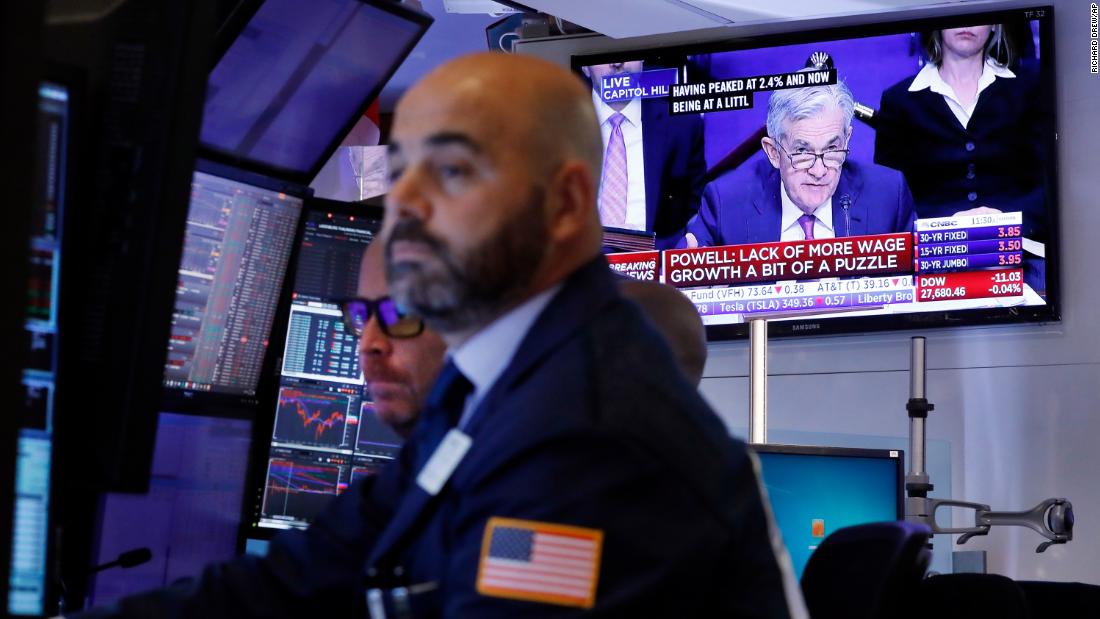[ad_1]
As a result, the Fed’s balance sheet has swelled by $286 billion since early September, to $4.05 trillion.
Despite the similarities to quantitative easing, the Fed has stressed its current actions are not a return of that 2008 crisis-era bond-buying program, which was aimed at stimulating the economy and boosting markets. The Fed says what it’s doing now is purely a technical fix.
The fix has worked: Borrowing costs in this critical corner of Wall Street are now back in line.
But there is a growing realization that the Fed’s bond purchases are supporting stocks, even if that wasn’t the goal.
“I don’t even think it’s debatable,” said Danielle DiMartino Booth, a former Fed official who is now CEO of Quill Intelligence. “It’s patently obvious that the Fed’s interventions into the market is having a huge effect on the stock market.”
Michael Wilson, Morgan Stanley’s chief investment officer, agrees. Wilson told clients in a note this week that the expansion of the Fed’s balance sheet is “helping further loosen financial conditions in an effort to boost growth.”
US stocks, at least up until the past few days, have been riding high on hopes for a preliminary trade agreement between the United States and China. Such a deal, which so far has proved elusive, would remove the biggest risk facing the economy.
And the Fed’s recent string of rate cuts — the central bank lowered rates at three straight meetings — is also playing a role.
‘Just semantics’
The sudden surge in the Fed’s balance sheet has captured Wall Street’s attention.
Part of the impact could be psychological: Some investors have been conditioned to buy stocks when the Fed is growing its balance sheet. Such a strategy worked well when stocks soared during the first three iterations of quantitative easing, known as QE1, QE2 and QE3.
“Whether it should be considered QE4 or not, in the eyes of the market it’s just semantics,” Peter Boockvar, chief investment officer at Bleakley Advisory Group, wrote in a recent note to clients. “Markets view any increase in the size of the Fed’s balance sheet as QE and the $250B increase in just two months is no doubt helping to lift stock prices.”
Powell has repeatedly pushed back against the argument that this is a stealth-version of QE by pointing out significant differences.
For one thing, the intent is different this time. After the 2008 crisis, the Fed gobbled up assets to push down borrowing costs and increase confidence in markets. Now, the Fed is focused squarely on easing the cash crunch that emerged in the overnight lending market, which allows banks, hedge funds and other financial players to cheaply and easily borrow for brief periods.
For another, the Fed isn’t even buying the same assets this time. During QE, the central bank purchased long-term Treasuries, which have a direct impact on mortgages, car loans and other forms of credit. Today, it’s focused on short-term bonds known as T-bills.
“Our Treasury bill purchases should not be confused with the large-scale asset purchase programs that we deployed after the financial crisis,” Powell told reporters during a press conference last month. He added that today’s moves “should not materially affect demand and supply for longer-term securities or financial conditions more broadly.”
‘Double-shot of liquidity’
Nonetheless, financial conditions have become extremely bullish.
And beyond the psychological impact, the Fed’s balance sheet expansion is having several important impacts.
Fed liquidity is boosting the bond market, making it easier for companies to borrow cash that can be used for share buybacks. Those share repurchases help boost demand for stocks while simultaneously boosting per-share earnings.
“It’s a double-shot of liquidity straight into the veins of the stock market,” said Quill’s Booth.
In addition, the T-bill purchases reduced returns on short-term government bonds, making stocks look more attractive by comparison.
“That is pushing investors with short-term horizons towards the stock market,” said Philip Marey, senior US strategist at Rabobank. “It is contributing to a stronger stock market.”
The great Fed experiment
Analysts say the Fed’s balance sheet expansion has also helped to reinvert the yield curve, the gap between short and long-term bonds. That is a huge positive because investors were spooked when the yield curve flipped upside down earlier this year. Historically, that has been an ominous sign about the economy. The steeper yield curve, by contrast, is likely encouraging risk-taking behavior.
“We view the Fed’s purchase program as integral to the promotion of easy financial conditions and supportive of asset prices,” Ralph Axel, senior US rates strategist at Bank of America Merrill Lynch, wrote in a note to clients.
The decision by the Fed to ramp up the size of its balance sheet was a tacit admission that the central bank erred by shrinking its balance sheet, and unintentionally sucking out too much cash. That left markets exposed to a liquidity crunch.
Now, the Fed is fiddling with the dials, trying to determine precisely how much cash is needed to keep the system operating smoothly.
The entire episode is a reminder of how, behind the scenes, modern central banking is very much an experiment. And experiments often bring about unintended side effects.
[ad_2]
Source link



